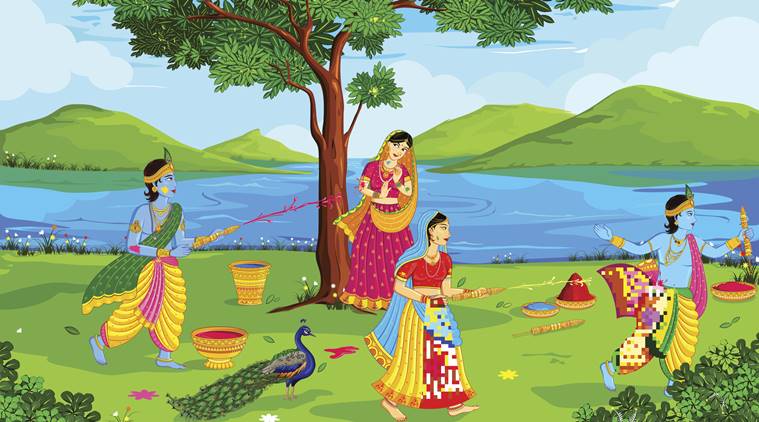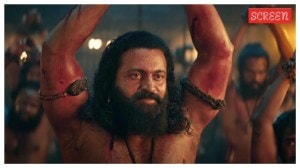Holi 2019: Myths and stories behind the festival of colours
Holi mythological stories: The festival is celebrated with great vigour in the villages around Mathura, the birthplace of Krishna. Holi is also associated with the Divine Dance known as Raaslila staged by Lord Krishna for the benefit of his devout gopis.
 Holi 2019: Krishna plays Holi with the gopis. (Source: Getty Images)
Holi 2019: Krishna plays Holi with the gopis. (Source: Getty Images)
By Subhamoy Das
Like most Indian festivals, Holi is inextricably linked to mythical tales featuring warriors, gods, demonesses and asuras. There are at least four legends that are directly associated with the festival of colours: the Holika-Hiranyakashipu-Prahlada episode, Lord Shiva’s killing of Kamadeva, the story of the ogress Dhundhi and Lord Krishna legend. In most of these stories, good defeats the evil forces and Holi is a part of the resulting celebration that follows.
A Wicked Demoness is Burnt Alive
The evolution of the term Holi makes an interesting study in itself. Legend has it that Holi derives its name from Holika, the sister of the mythical megalomaniac king Hiranyakashipu who commanded everyone to worship him. But his little son Prahlada refused to do so as he was a devout follower of Vishnu, the great Preserver of the Universe.
Hiranyakashipu, angered by his son’s defiance, ordered his sister Holika to kill Prahlada and she, possessing the power to walk through fire unharmed, picked up the child and walked into a fire with him. Prahlada, however, chanted the many names of Lord Vishnu and was saved from the fire. Holika perished because she did not know that her powers were only effective if she entered the fire alone.
This myth has a strong association with the festival of Holi, and even today there is a practice of creating a pyre the night before Holi and setting it alight as a symbolic burning of the demoness Holika. This is known as Holika Dahan.
The God of Love is Worshipped
It is often believed that it was on Holi that Lord Shiva opened his third eye and incinerated Kamadeva, the God of Love, to ashes. This happened when Shiva was disturbed during his meditation. So, many people worship Kamadeva on Holi, with the simple offering of a mixture of mango blossoms and sandalwood paste.
An Ogress is Defeated by Children
It was also on this day that an ogress called Dhundhi, who was troubling the children in the kingdom of Prithu, was chased away by the shouts and pranks of village youngsters. Although this female monster had secured several boons that made her almost invincible, shouts, abuses and pranks of the boys were her undoing. This was a chink in the armour for Dhundi, owing to a curse from Lord Shiva. The little boys took advantage of her weakness and drove her out of their land.
 Celebrate! Your Fun Festival Handbook: HOLI
Celebrate! Your Fun Festival Handbook: HOLI
Krishna Plays Holi with the Gopis
In the legends of Krishna as a youth, he is depicted as playing all sorts of pranks with the gopis, or female cowherds. One prank was to throw coloured powder all over them. So on Holi, images of Krishna are often carried through the streets. Holi is celebrated with great vigour in the villages around Mathura, the birthplace of Krishna. Holi is also associated with the Divine Dance known as Raaslila staged by Lord Krishna for the benefit of his devout gopis.
(Excerpted with permission from ‘All About Holi’ by Subhamoy Das featured in Celebrate! Your Fun Festival Handbook: HOLI, published by Hachette India Children’s Books.)





- 01
- 02
- 03
- 04
- 05


























